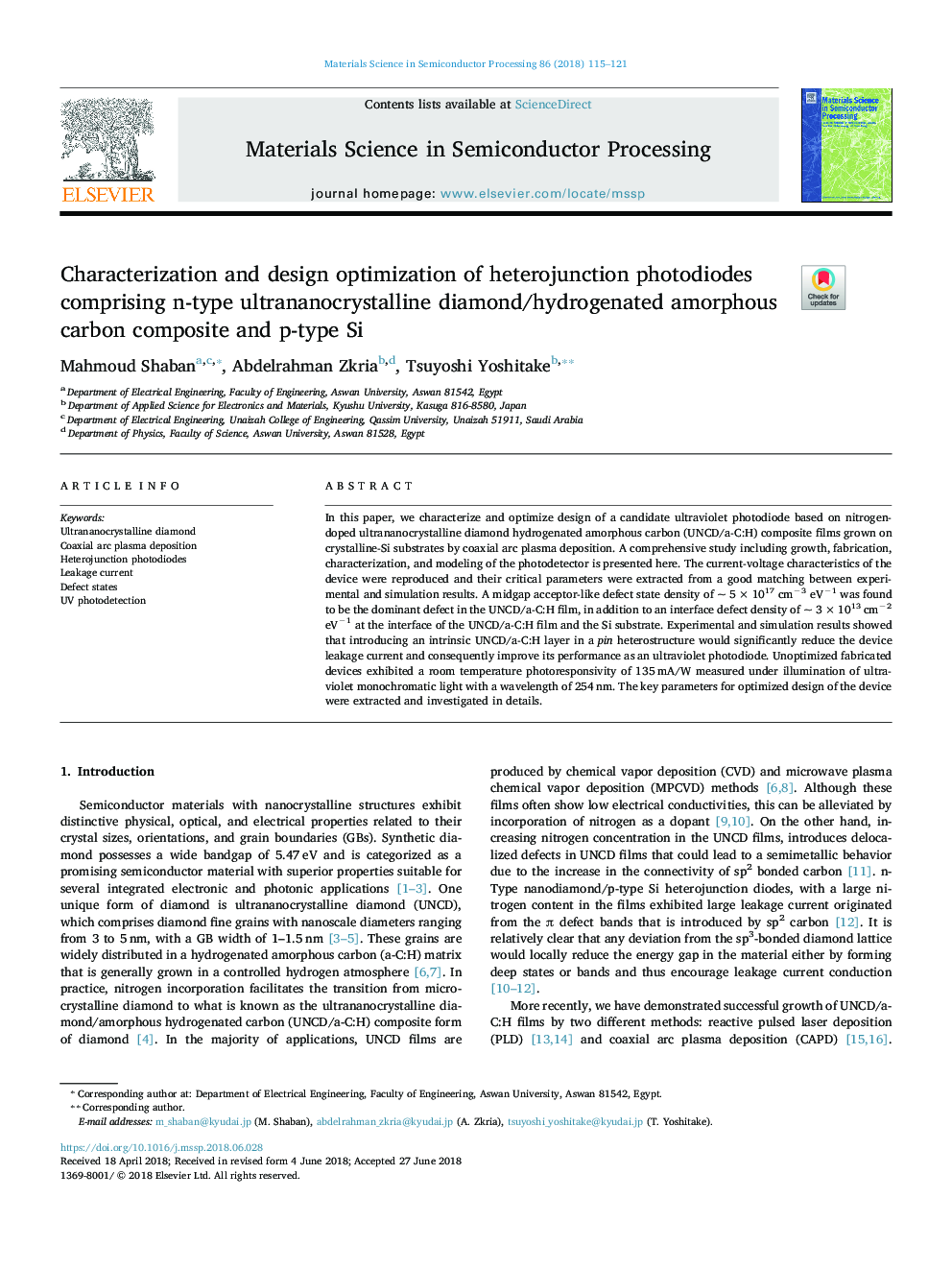| Article ID | Journal | Published Year | Pages | File Type |
|---|---|---|---|---|
| 7117472 | Materials Science in Semiconductor Processing | 2018 | 7 Pages |
Abstract
In this paper, we characterize and optimize design of a candidate ultraviolet photodiode based on nitrogen-doped ultrananocrystalline diamond hydrogenated amorphous carbon (UNCD/a-C:H) composite films grown on crystalline-Si substrates by coaxial arc plasma deposition. A comprehensive study including growth, fabrication, characterization, and modeling of the photodetector is presented here. The current-voltage characteristics of the device were reproduced and their critical parameters were extracted from a good matching between experimental and simulation results. A midgap acceptor-like defect state density of ~ 5â¯Ãâ¯1017 cmâ3 eVâ1 was found to be the dominant defect in the UNCD/a-C:H film, in addition to an interface defect density of ~ 3â¯Ãâ¯1013 cmâ2 eVâ1 at the interface of the UNCD/a-C:H film and the Si substrate. Experimental and simulation results showed that introducing an intrinsic UNCD/a-C:H layer in a pin heterostructure would significantly reduce the device leakage current and consequently improve its performance as an ultraviolet photodiode. Unoptimized fabricated devices exhibited a room temperature photoresponsivity of 135â¯mA/W measured under illumination of ultraviolet monochromatic light with a wavelength of 254â¯nm. The key parameters for optimized design of the device were extracted and investigated in details.
Related Topics
Physical Sciences and Engineering
Engineering
Electrical and Electronic Engineering
Authors
Mahmoud Shaban, Abdelrahman Zkria, Tsuyoshi Yoshitake,
